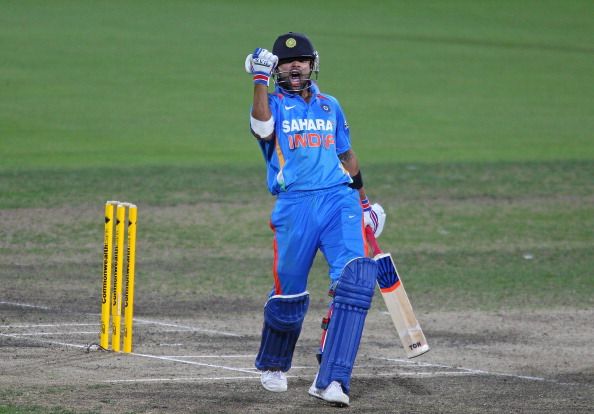You win the toss. Bat first. Set a big total. Game won, right? Absolutely not. Gone are the days when teams feared chasing huge totals in cricket matches. In modern day cricket, captains don’t mind chasing at all. Chasing down totals is an art and it’s become more methodical than ever before. Various factors contribute to it - flat pitches, shorter boundaries and a rapid decaying brand of good bowlers. One might argue that conditions remain the same for both the teams in a match but it’s also true that teams batting second are actually aware of the pace at which they need to play and getting an account of how the first innings has spanned out, chases can be planned accordingly.
Since I started watching cricket, in the late 90’s, scores around 250 were match-winning and a score around 300 meant the second innings was a mere formality. Chasing down 300 meant someone had actually batted heroically in the second innings. The players tried their best though, but it was all about handling pressure in such situations. When the giant scoreboard keeps showing the ever increasing required run-rate, pressure is created automatically. The situation has changed by leaps and bounds now. Scores of 300 aren’t match-winning at all. What’s the reason behind it?
Attitude.
Now, even if a mammoth total needs to be chased in the second innings teams have a general belief ”If the team batting first can score, even we can!”

The match between Australia and South Africa at Johannesburg in 2006 remains one of the best one-day matches ever. Ricky Ponting never would have imagined being the losing captain after his side scored 434 in the first innings. South Africa still holds the record for chasing the highest total in one day cricket. High scoring matches had been played earlier as well, but for me it was this match that actually defined the brand of cricket that was to be played in the future.
Going by the history books, Team India hasn’t been good at chasing. We did chase high totals sometimes but it was due to some individual brilliance rather than a team performance. This isn’t the case now. Of all the things that Dhoni should be appreciated for, one of them has to be for turning India into a superb chasing team. In the past few years, Team India has been part of some record chases in ODI cricket. The 2011 WC final was a clear case in this regard. India chased down 275 at the Wankhede to bring the World Cup home. Still, the best was yet to come. India successfully chased down 350 plus scores twice in the bilateral home series against Australia in 2013. Virat Kohli is just a master at chasing down totals and continues to deliver time and again. Out of his 19 international one-day centuries, 13 have come while chasing and India have won on 12 of those occasions.
Teams have now realized that the key factor while chasing big totals lies in keeping wickets in hand. A required run-rate of around 12 in the last 10 overs is manageable with the presence of quality finishers in the side. It’s not just about boundaries. Even twos and threes have become great scoring options. A couple of twos along with a boundary can easily result in 10 run over. The overall cricketing aspect related to chasing has changed tremendously in the past decade. Teams can’t be confident about par scores on a particular ground. Cricket is just moving closer to being just a batsman’s game and in such a scenario, batting first after winning the toss might just become a rarity in the near future.
Follow IPL Auction 2025 Live Updates, News & Biddings at Sportskeeda. Get the fastest updates on Mega-Auction and cricket news

